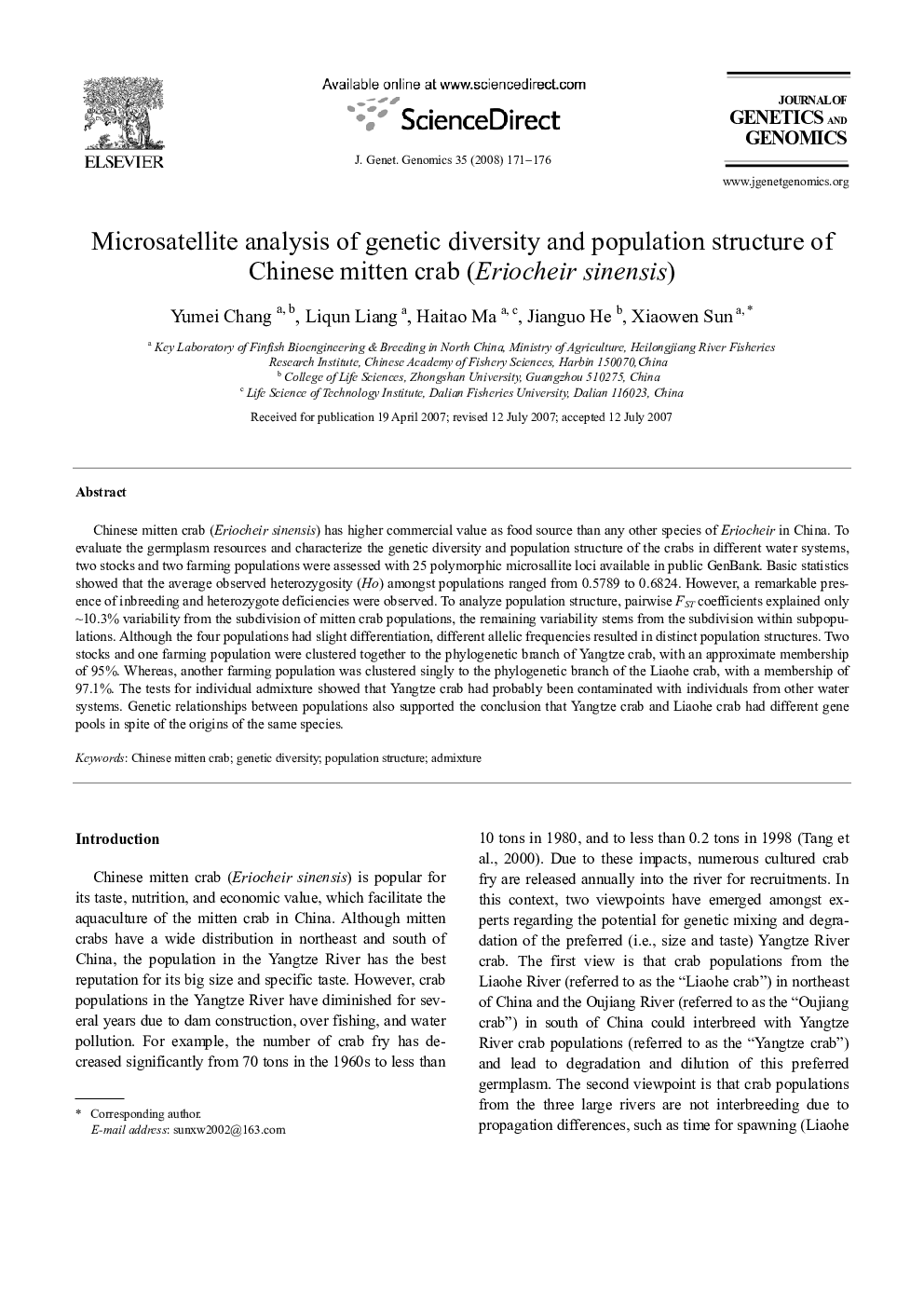| Article ID | Journal | Published Year | Pages | File Type |
|---|---|---|---|---|
| 2788019 | Journal of Genetics and Genomics | 2008 | 6 Pages |
Chinese mitten crab (Eriocheir sinensis) has higher commercial value as food source than any other species of Eriocheir in China. To evaluate the germplasm resources and characterize the genetic diversity and population structure of the crabs in different water systems, two stocks and two farming populations were assessed with 25 polymorphic microsallite loci available in public GenBank. Basic statistics showed that the average observed heterozygosity (Ho) amongst populations ranged from 0.5789 to 0.6824. However, a remarkable presence of inbreeding and heterozygote deficiencies were observed. To analyze population structure, pairwise FST coefficients explained only ∼ 10.3% variability from the subdivision of mitten crab populations, the remaining variability stems from the subdivision within subpopulations. Although the four populations had slight differentiation, different allelic frequencies resulted in distinct population structures. Two stocks and one farming population were clustered together to the phylogenetic branch of Yangtze crab, with an approximate membership of 95%. Whereas, another farming population was clustered singly to the phylogenetic branch of the Liaohe crab, with a membership of 97.1%. The tests for individual admixture showed that Yangtze crab had probably been contaminated with individuals from other water systems. Genetic relationships between populations also supported the conclusion that Yangtze crab and Liaohe crab had different gene pools in spite of the origins of the same species.
